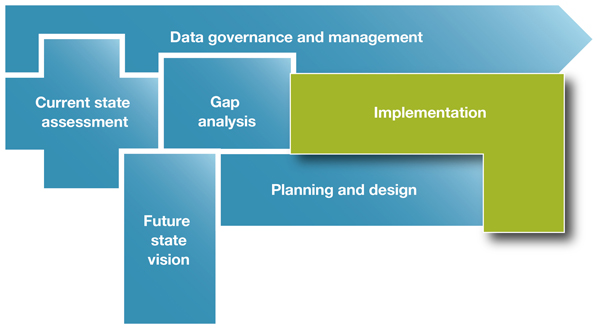This phase is about applying the right solutions and tools to develop interoperability. Implementation decisions will be informed by the planning and design phase that outlines how your revised business environment will operate.
Your implementation isn't complete until you have also considered how you will embed new processes into business as usual (BAU) – along with a plan for continuous improvement.
The solutions and tools summarised below are specific to the four interoperability scenarios that highlight data integration, legacy data migration, data exchange, and metadata for publication and exchange.
Data integration
Advice on approaches to combine and publish data from different sources into usable and trusted information.
Data collection
Advice on how data collection is used to gather information from users.
Data migration
Advice on transferring data from one application or format to another. Includes advice to address data quality and lineage issues during a data migration.
Data exchange
Outlines the importance of agreed data formats and structures between parties exchanging data. Includes advice on data exchange standards for the structure of data elements.
BAU, monitoring and improvement
Advice to help you embed new processes into business as usual (BAU). This page also outlines how to monitor the solution for continuous improvement.


